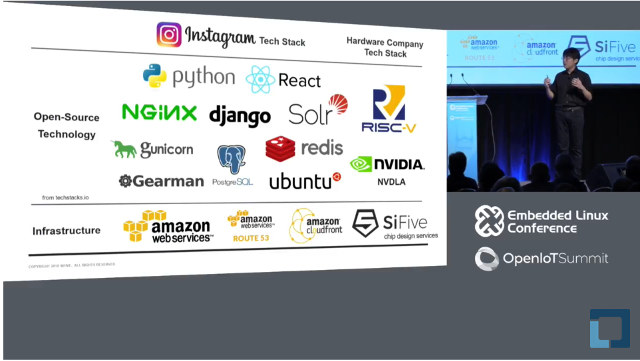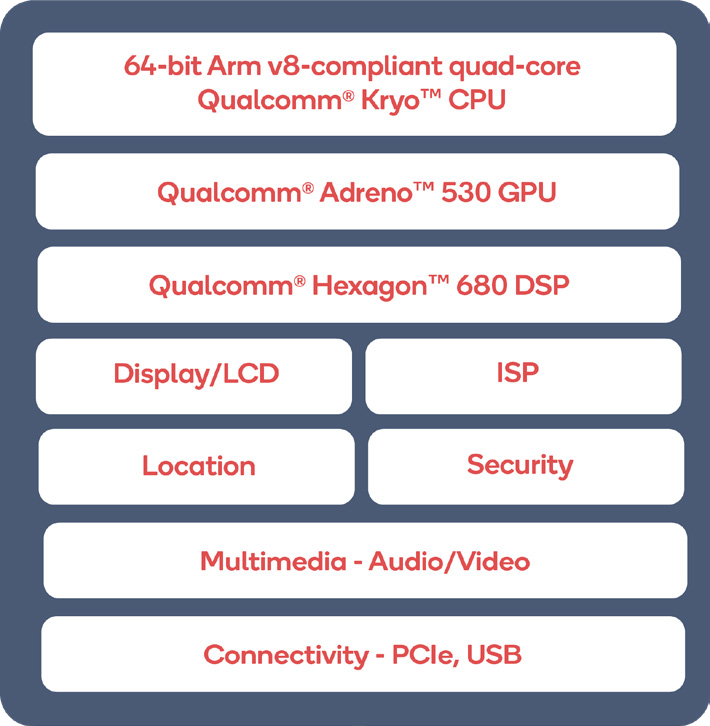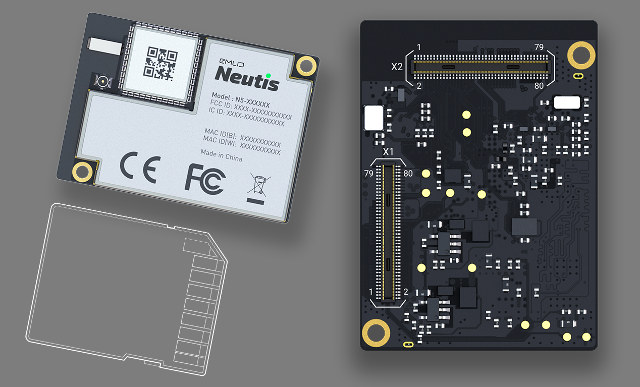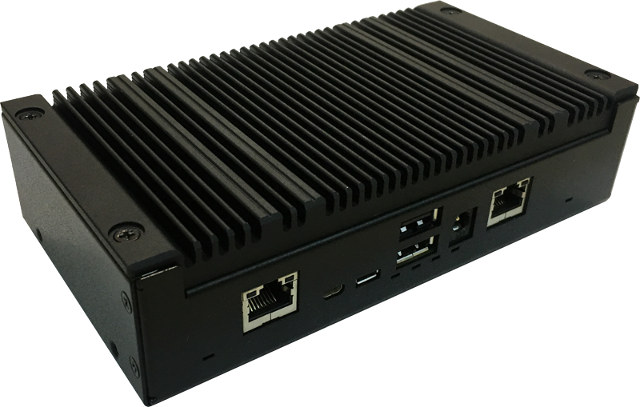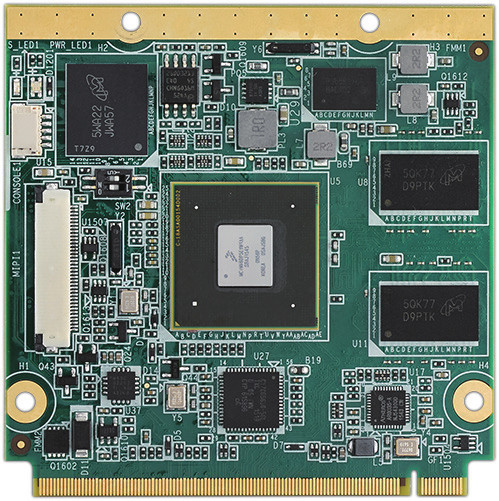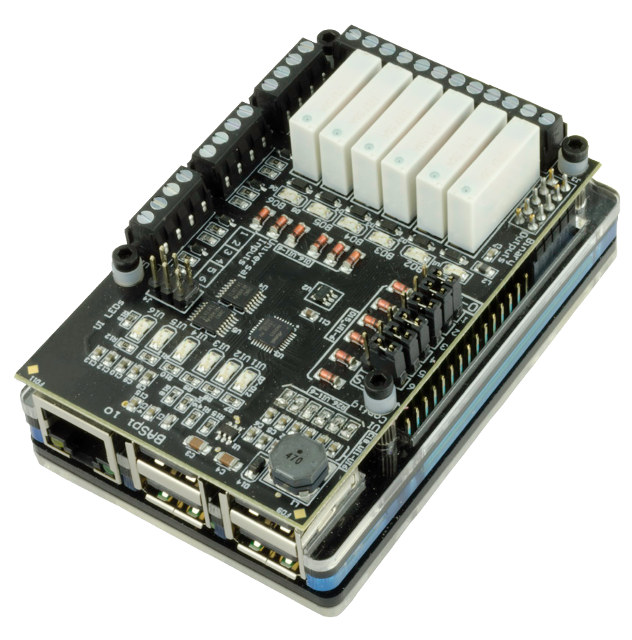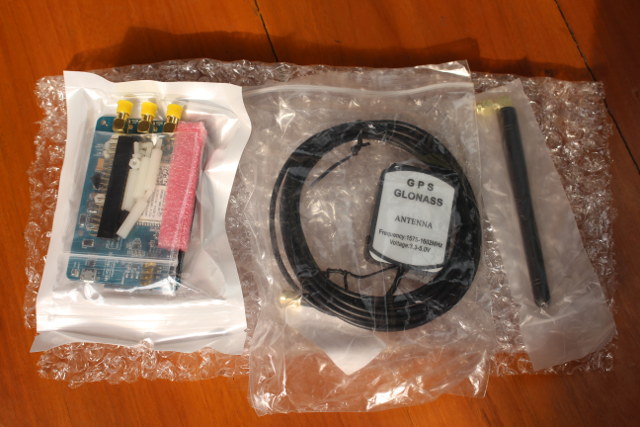The Embedded Linux Conference and OpenIoT Summit 2018 have just started, and the Linux Foundation has already uploaded a few keynote videos to YouTube, including the one by Yunsup Lee, Co-Founder and CTO, SiFive, entitled “Designing the Next Billion Chips: How RISC-V is Revolutionizing Hardware”. Yunsup explains the current problem with chip development, and go through the open source RISC-V solutions offered by Sifive. Currently design a chip has a high upfront (NRE = non-recurring engineering) costs, is time-consuming (1.5 to 2 years at least) and silicon vendors normally target high volume production, but now many applications like IoT or machine learning require custom chips that may not be (yet) manufactured in such high volume. The solution is to adapt some idea from open source software to open source hardware in order to lower the costs, enable fast prototyping, and involve the community of designers and software developers. He took […]
Qualcomm Snapdragon 820E Launched for the Embedded Market, DragonBoard 820c Board Selling for $199
Qualcomm Snapdragon processors are mainly used in smartphones manufactured in high volume, and in the past if you contacted the company to use their processor for your custom project with a target yearly production of a few thousands pieces, they’d just ignore you. This started to change in late 2016 with the launch of Snapdragon 410E and 600E processors based on mobile version of Snapdragon 410 and 600 processors minus the modem, but instead targeting the embedded space and the Internet of Things, which anybody could purchase easily through Arrow Electronics, and offering a 10-year life cycle. Those are good if you are satisfied with entry-level or mid-range processor, but the company has now announced the launch of Snapdragon 820E for customers requiring better performance for their application. Snapdragon 820E specifications appears to be moslty the same as Snapdragon 820 except for the lack of X12 cellular modem: CPU – 4x Qualcomm […]
Neutis N5 is a $49 Allwinner H5 SoM with WiFi and Bluetooth
Allwinner, Amlogic and Rockchip SoCs can be found in many single board computers or development boards, but contrary to processors from Texas Instruments, NXP or Atmel, there aren’t that many system-on-modules based on the low cost SoCs with companies like Pine64, Olimex, or Theobroma providing some options in that space. There soon will be more, as Emlid will launch Neutis N5 module based on Allwinner H5 processor in the next couple of months with the module also including WiFi and Bluetooth, beside the processor, memory, and storage. Neutis N5 specifications: SoC – Allwinner H5 quad core Arm Cortex-A53 processor with Arm Mali-450MP4 GPU System Memory – 512 MB DDR3 RAM Storage – 8 GB eMMC flash Connectivity – Wi-Fi: 802.11 b/g/n. BT: 4.0 dual-mode BLE with on-board antenna and U.FL connector for optional external antenna HW Security – Tamper-resistant dedicated crypto chip for storing cryptographic keys, unique ID, random number […]
Inforce 6320 Snapdragon 410E Powered IoT Edge Gateway Launched for $250
Inforce Computing launched several boards and modules based on Snapdragon 410/410E including 6301 SoM and 6309 micro SBC, which their customers can integrate into their own products. The company has now launched an “Application Ready Platform” with Inforce 6320 IoT/IoE (Internet of Everything) edge routers that can be deployed directly by their customers. Inforce 6320 comes with a Snapdragon 410E board with dual Gigabit Ethernet, a Wireless module with WiFi and Bluetooth, USB 2.0 ports, a micro HDMI port and other interfaces, as well as a rugged metal enclosure also used for cooling.Inforce 6320 IoT gateway specifications: SoC – Qualcomm Snapdragon 410E processor (APQ8016E) with four ARM Cortex-A53 64-bit CPU @1.2GHz, Adreno 306 GPU with support for OpenGL ES 3.0, DirectX, and OpenCL, Hexagon QDSP6 @ 700MHz System Memory and Storage – 1GB LPDDR3 RAM + 8GB eMMC (eMCP package); MicroSD card connector Connectivity 802.11 b/g/n 2.4GHz WiFi, BT 4.1 […]
Advantech ROM-7720 is a Qseven 2.1 Compliant i.MX 8 QuadMax Computer-on-Module
Many solutions based on NXP i.MX8 processors are likely to be announced during Embedded World 2018 next week. We’ve already seen several NXP i.MX 8M Cortex A53 based modules such as Variscite DART-MX8M or Compulab CL-SOM-IMX8 systems-on-module, and more are coming. One of those will be Advantech ROM-7720 computer-on-module (CoM) featuring the top of the line NXP i.MX 8 QuadMax Cortex A72/A53 processor and following QSeven 2.1 specifications / form factor. Advantech ROM-7720 CoM specifications: SoC – NXP i.MX 8QuadMax processor with 2x Cortex A72 cores @ up to 1.6GHz, 4x Cortex A53 cores, 2x Cortex-M4F real-time cores, a HiFi 4 DSP, and 2x Vivante GC7000XSVX GPUs System Memory – 2GB LPDDR4 @ 1600 MHz (optional 4GB RAM) Storage – 8 GB eMMC Flash for OS, 64 MB Quad SPI Flash for boot loader Video Output / Display I/F 2x 24-bit LVDS, 1366 x 768 for 1ch; 1920 x 1080 […]
BASpi I/O is a Raspberry Pi HAT Expansion Board for Building Automation (BACNet)
BACNet is a data communication protocol for Building Automation and Control Networks that has been developed, supported and maintained by ASHRAE (American Society of Heating, Refrigerating and Air-Conditioning Engineers) Standing Standard Project Committee since 1987, and used as building automation standard in the US, Europe, and more than 30 other countries. It’s used for HVACs, lightings, elevators, fire safety, and other systems used in buildings. It’s also known as ISO 16484-6 standard. I had never heard of it, but this afternoon, I’ve come across Contemporary Controls BASPi I/O, a Raspberry Pi add-on specifically designed for BACNet, and providing 12 physical I/O points including 6 Universal Inputs and 6 Relay Outputs. BASPi I/O specifications and features: BACnet/IP Server – 12 physical points and 24 virtual points BACnet/IP over Ethernet or Wi-Fi Resident Sedona Virtual Machine (SVM) Input/Output — 12-points of physical I/O 6x configurable Universal Inputs: Analog Input, Binary Input, Resistance, […]
Embedded Linux Conference & IoT Summit 2018 Schedule
The Embedded Linux Conference 2018 and the OpenIoT Summit 2018 will jointly take place next month, on March 12 – 14, 2018 in Portland, Oregon, USA. The former is a “vendor-neutral technical conference for companies and developers using Linux in embedded products”, while the latter is a “technical conference for the developers and architects working on industrial IoT”. The Linux Foundation has already published the schedule, and it’s always useful to learn what will be discussed about even for people who won’t attend. With that in mind, here’s my own virtual schedule with some of the talks I find interesting / relevant to this blog. Monday, March 12 10:50 – 11:40 – Progress in the Embedded GPU Ecosystem by Robert Foss, Collabora Ltd. Ten years ago no one would have expected the embedded GPU ecosystem in Linux to be what it is now. Today, a large number of GPUs have […]
How to Use 3G and GPS on Raspberry Pi with ThaiEasyElec 3G HAT Expansion Board
Venus Supply is an embedded systems company based in Bangkok, Thailand that sells products through their ThaiEasyElec website/brand, as well as a act as a local distributor for popular DIY electronics items. I previously tested their ESPino32 ESP32 board, and the company has now send me another of their new product called “3G HAT Expansion for Raspberry Pi” and based on Quectel UC20-G that support 3G and GPS/GLONASS connectivity globally, meaning it should work in any country with 2G or 3G coverage. After listing the specifications, going through unboxing and assembly with a Raspberry Pi 2/3 board, I’ll write some quick start guide to show what I had to do to use GPS and connect to 3G with a Hologram SIM card. 3G HAT Expansion for Raspberry Pi Specifications Quectel UC20-G wireless module supporting Cellular 3G – UMTS @ 800/850/900/1900/2100 MHz 2G – GSM @ 850/900/1800/1900 MHz Data – HSPA+ […]


